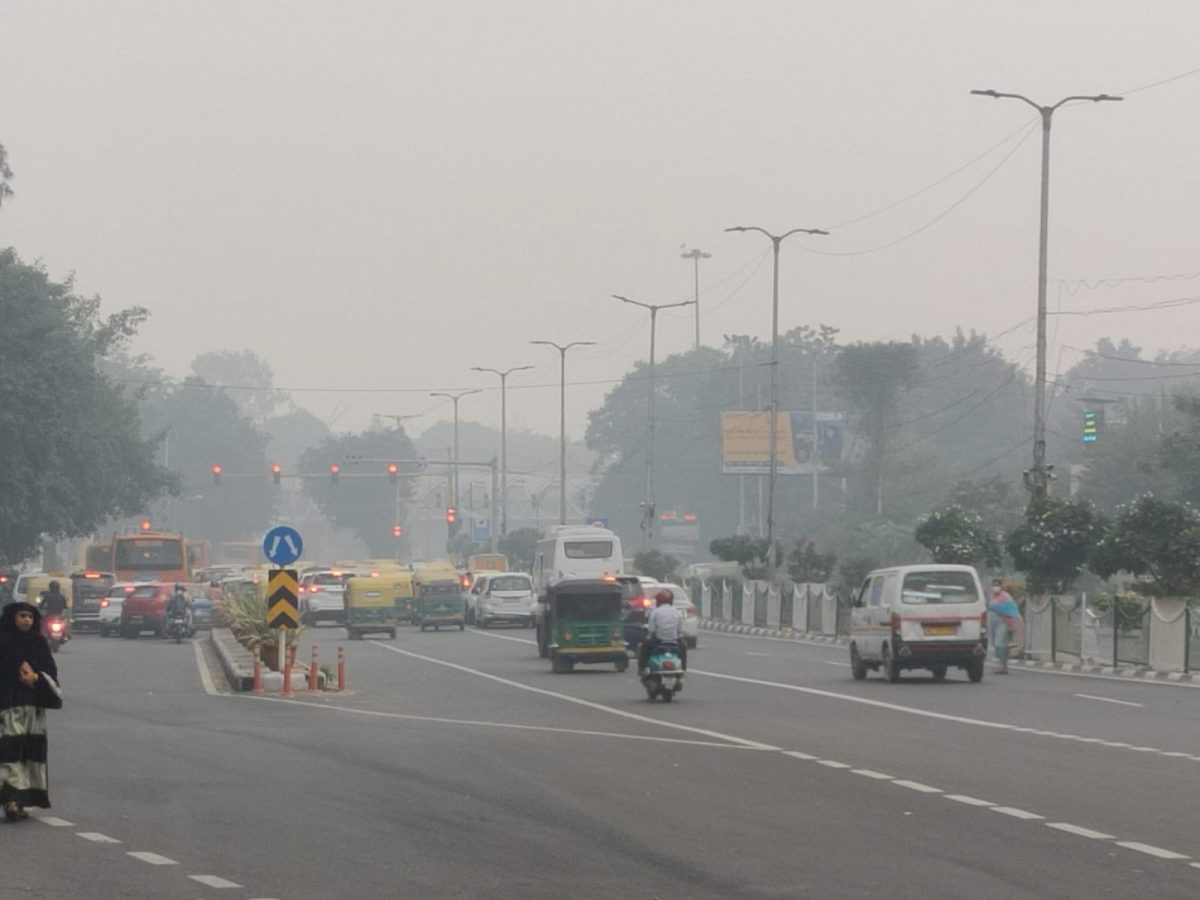
Delhi on Thursday continued to struggle with increasing pollution levels, as the Air Quality Index (AQI) remained in the ‘very poor’ category in most parts of the city.
At 9 am, the AQI was recorded at 328, with a thick layer of smog covering the city in the morning, according to the Central Pollution Control Board (CPCB).
The AQI is divided into four stages: Stage I ‘Poor’ (201-300); Stage II ‘Very Poor’ (301-400); Stage III ‘Severe’ (401-450); and Stage IV ‘Severe Plus’ (above 450).
Several areas, including Dwarka, Rohini, DTU, IGI Airport (T3), ITO, Mundka, Narela, Patparganj, Shadipur, Sonia Vihar, Wazirpur, Alipur, Ashok Vihar, Aya Nagar, Burari, Mandir Marg, Jawaharlal Nehru Stadium, Najafgarh, and Nehru Nagar, recorded AQI levels in the ‘very poor’ category on both Wednesday and Thursday morning.
Delhi’s winter months often see severe pollution due to a mix of factors like low wind speeds, falling temperatures, high moisture levels, and pollutants that create surfaces for condensation.
This worsening air quality has led to a 30-40% increase in respiratory problems, particularly affecting children and the elderly.
Anti-pollution measures under the Graded Response Action Plan (GRAP)-II were implemented on Tuesday.
Meanwhile, the city’s minimum temperature was 20.7 degrees Celsius, three degrees above the seasonal average, according to the India Meteorological Department (IMD).
Humidity was measured at 70% at 8:30 am, and the IMD has forecast mostly clear skies for the next three days, with the maximum temperature expected to reach 33 degrees Celsius.
Delhi’s pollution worsens in winter due to factors like low wind speeds, cooler temperatures, and high moisture levels, which trap pollution particles in the air.
The deteriorating air quality has led to a 30-40% rise in respiratory issues, particularly affecting children and the elderly. Health experts have advised residents to avoid outdoor activities and limit exposure to dust.
Arunesh Kumar, a senior consultant at Paras Health in Gurugram, noted, “There has been a sharp rise in respiratory cases, with hospitals witnessing a 30-40% increase. Pollutants such as PM2.5, PM10, and nitrogen dioxide are getting trapped due to colder weather and stagnant air.”
Delhi’s Lieutenant Governor VK Saxena wrote to Chief Minister Atishi, highlighting road dust as a major contributor to the city’s air pollution, and suggested focusing on local solutions rather than blaming others.
Amid growing pollution levels and toxic froth in the Yamuna river, AAP leaders blamed BJP-ruled Haryana and Uttar Pradesh for the pollution in Delhi.
In his letter, Saxena claimed that about 36% of Delhi’s air pollution is due to road dust, caused by unprocessed construction and demolition waste.
Environment Minister Gopal Rai stated that he had written to the central government, reiterating his request for a meeting to approve cloud seeding to induce rain and combat Delhi’s air pollution.
In his letter to Union Environment Minister Bhupender Yadav, Rai emphasised the need for emergency measures like cloud seeding to address the hazardous pollution levels.
The BJP has called for Rai’s resignation, accusing him of prioritising Punjab’s political interests over Delhi residents’ health concerns.
Delhi BJP president Virendra Sachdeva demanded accountability from Punjab regarding stubble burning, which he claimed is a significant contributor to pollution in northern India.
On Wednesday, major pollution sources in Delhi included transportation, stubble burning, and dust pollution. Transportation emissions accounted for 13.5% of the city’s pollution, according to the Centre’s Decision Support System for Air Quality Management.
Experts believe that AQI levels may not reach the ‘severe’ category until mid-November, as temperatures have not yet dropped and wind speeds remain stable. Mahesh Palawat from Skymet Weather Services explained that pollution levels will likely rise when temperatures begin to fall.
Anti-pollution measures under the Graded Response Action Plan (GRAP) II were implemented on Tuesday, and the Delhi government announced the deployment of 1,800 additional traffic personnel at 97 congestion points to help reduce pollution.
(With inputs from PTI)
Ahead of her January 11 Delhi concert, legendary vocalist Begum Parveen Sultana reflects on her…
Sood said universities are no longer limited to academic instruction and are increasingly emerging as…
The accused has allegedly confessed his involvement and further investigation is underway to recover the…
The petitions challenge the Delhi School Education (Transparency in Fixation and Regulation of Fees) Act,…
A Saket court staffer allegedly died by suicide after jumping from a building, with police…
Customs officials intercepted the duo on arrival from Vietnam at IGI Airport’s Terminal 3, recovering…